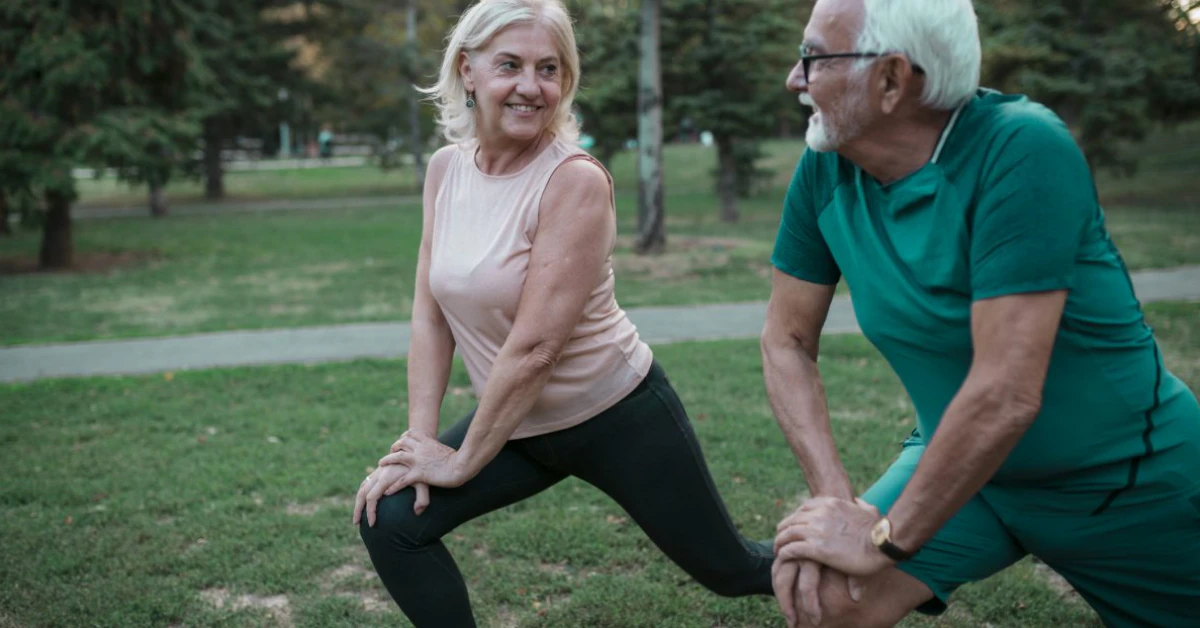Alright, let’s cut to the chase. You’re here because you’ve heard whispers about this “exercise drug” thing and wonder: Could it actually work for someone with Alzheimer’s? Yep. But buckle up—this isn’t a miracle pill story. It’s more like a science diary entry, written in plain language for the rest of us. Imagine a friend spilling the tea after spending a week Googling what-if scenarios. Let’s get into it.
Brain Power 101: Exercise’s Real Impact
We all know exercise is supposed to be great for the brain, but, like… why? Turns out, your body isn’t just a muscle factory when you move. It’s doing magic on your noggin’. Here’s the breakdown:
How Movement Heals the Brain
- Blood flow boost: Ever snappish or forgetful? Exercise pumps oxygen-rich blood to your hippocampus—the area responsible for memory. Real quiet magic.
- Mood & inflammation: Physical activity isn’t just good for the body; it eases brain inflammation linked to Alzheimer’s, like cleaning up mess after a wild party.
- Plaque police: That sticky amyloid-beta? Turns out exercise might slow its buildup. Read: less clogged brainpipes. A 2022 Harvard-led study found even 4,000 steps a day reduced AD risk. 10,000 steps? Risk dropped by 35%. (More on that, here)
Okay, but what if someone can’t lace up their sneakers? Let’s shift gears — literally.
Mobility Roadblocks: When Workouts Aren’t an Option
Real talk: for folks with advanced Alzheimer’s, even standing feels like climbing Kilimanjaro. Arthritis, balance issues, muscle loss—it’s a cruel trifecta. We talked to June, 78, who shared this story:
“My husband used to hike every weekend. Now he can barely walk from the couch to the fridge. It’s like his legs forgot how.”
If you’ve been in June’s shoes, you know how helpless this feels. So here’s what the research world is mumbling about—you probably can’t blame her for Googling “exercise mimic drugs” at 3 AM, right?
What Exactly is an ‘Exercise Mimetic’?
Picture this: a tiny molecule that tells your brain, “Hey, we’re gonna fake the feel-good buzz you get from jogging.” Sounds sci-fi? It’s not.
Scientists at Washington University are studying compounds that fire up the BDNF gene pathway—think of BDNF as the brain’s version of a personal trainer. (Read the Alzheimer’s Association’s take.)
Wait, Pigs Are in This Too?
You read that right. Pigs. Gottingen miniature pigs, to be precise—genetically wired to mimic human Alzheimer’s progression. I know, right? Researchers tweak their APP and PSEN1 genes (the bad guys in early-onset AD), then test how exercise-like treatments stack up.
Think Like a Scientist: Pig Models Stealing the Spotlight
| Pig Model | Gene Link | Alzheimer’s Focus |
|---|---|---|
| APP pigs | False protein-making genes | Tracking amyloid buildup effects |
| PSEN1 pigs | Mutation playlist | Early-onset AD patterns |
| 5xFAD pigs | Uber aggressive gene | Navigating inflammation pathways |
These aren’t just pigs in lab coats—they’re reshaping our understanding of Alzheimer’s treatment alternatives. A PMCID paper shares how their brain scans mirror ours so closely, it’s scary. (Or read up here if you’re curious.)
The Pros and Cons: Playing Devil’s Advocate
Before stocks are up for exercise mimic drugs, let’s dust off the hype goggles. Every sci-piece has two sides—here’s the balanced scoop.
The Upside: Finally, Options
- Ease for caregivers: For those wrestling with physical limits, this could be a backup plan. Dr. Norris at MIT dives into how BDNF-activating drugs might tap into that same production line.
- New hope in a capsule: That’s if—big if—we can stabilize the compounds. Right now, therapies last about as long as a phone charge in an AG.
But Here’s the Catch
- Unknown side-effects: Exercise does waaaaay more than anyone expects. It sparks sleep, digestion, and dopamine. You can’t cram all of that into a tablet tomorrow.
- Not a free pass: It’s too tempting to think, “Oh great, ignore going on walks now.” Wrong move. Physical therapy tops any drug race. Ask Dr. Laxton, who uses DBS surgery in tandem with low-impact movement. (He’s got opinions.)
Real Talk: The EXERT Trial and What Comes Next
Forget the fluff. The EXERT study (2025’s headline-grabber) tested two exercise models in 4,000 mildly forgetful humans.
Guess what? Neither witty spinach jokes nor treadmill videos slowed cognition loss dramatically. (Crickets in the research lab.) But hey, don’t throw all jogging pants away yet.
What Did They Learn?
- Intensity probably doesn’t matter as much as consistency.
- Need a new definition of “window of benefit.” Maybe we’re testing too late.
Rumor has it some teams are eyeing 2026 for combo studies—exercise mimic drugs plus low-dose Alzheimer’s drugs (like lecanemab). Still early.
So… What Should You DO About Alzheimer’s and Activity?
Science can swirl, but today—what’s the plan?
1. Tailor the Move
Mobility issues ≠ couch time only. Think:
- Chair surfing: Yep. Turning sitting into a stealth workout by reaching, stretching, or tensing muscles while seated.
- Gardening glory: Pushing a lawnmower or planting seeds boosts blood flow and grounding. The Alzheimer’s Society swears by this one.
- Passive motion: Some clinics use machines that work limbs while at rest—give it a try if available.
2. Talk to the Right Doc
Flag this question at your next checkup: “Is a mimic drug in the cards for us?”
3. Bug Your Local News
Why pigs matter? Because these genetically modified beasts—no offense—hint at tomorrow’s drug possibilities. If pigs enter human panels for study in your area, advocate for inclusion. (What’s next in gene research? NIH gets it.)
A Layman’s Take: What Would I Do?
Stop judging me, but I’m a huge fan of walking with friends, yoga around the porch, even shuffling my way through strip mall window shopping. If rigidity or memory worsened? I’d dog-ear that “EXERT study” report more closely, then pick up the Slack with a multidisciplinary team (yep, neurologist AND physical therapist). Prioritize movement first. Mimicker? That’s plan Z after exhausting A through Y.
A Final Thought
Here’s the scoop you rarely hear: Alzheimer’s isn’t about EPIC interventions. It’s about small, intentional steps. Whether that’s jogging, pig gene golf—or futuristic poop science (just kidding), the goal is to blinker against fear and focus on what’s doable today. So what’s your non-gym brain-boosting plan right now? Hit reply. I’m listening.
Need to obsess over the details of the EXERT trials or why pigs rule Alzheimer’s studies? Go ahead, here’s the deep dive. Or just take a walk—your forget-me-not plan A is always better than any plan B pill “maybe coming.”


















Leave a Reply
You must be logged in to post a comment.